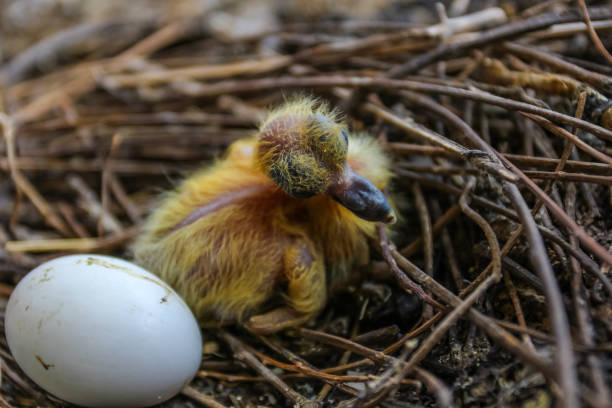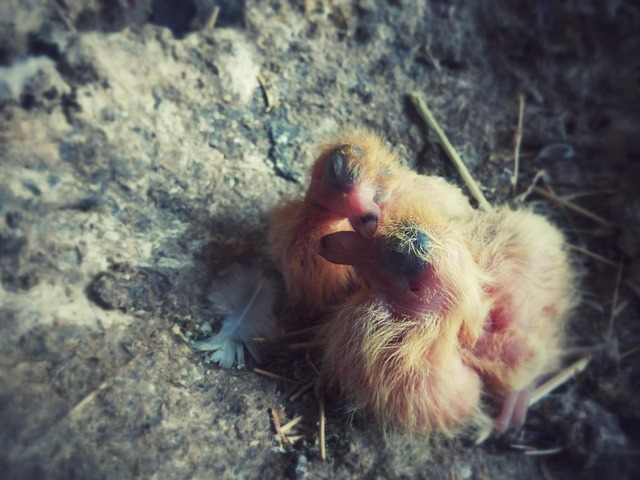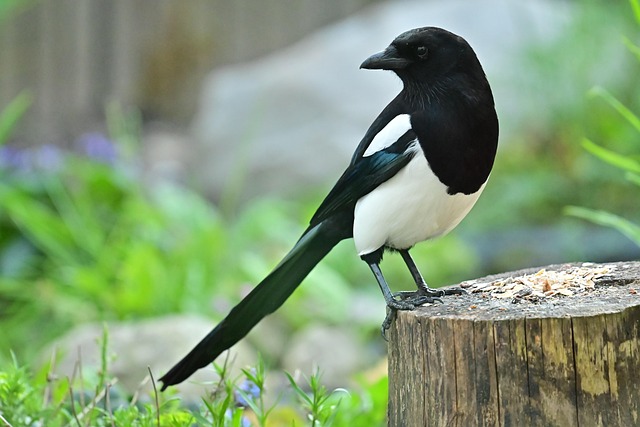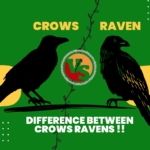Pigeons are one of the most common urban birds, known as squabs, but most people have not seen baby pigeons. The main reason for this is that they remain hidden in their nests until they are almost the same size as adult pigeons. If you’ve ever wondered what baby pigeon look like, how they grow, and how to care for them, this guide will provide all the information you need. Below is everything you need to know about baby pigeons, from physical characteristics to growth stages, diet, and interesting facts.
Baby Pigeon – A Beautiful Childhood Of A Pigeon

| Attribute | Description |
|---|---|
| Common Name | Baby Pigeon |
| Scientific Name | Columba livia (Rock Pigeon) |
| Other Name | Squab |
| Species | Columba livia domestica |
| Family | Columbidae |
| Order | Columbiformes |
| Class | Aves |
| Kingdom | Animalia |
| Lifespan | 6-10 years (wild), up to 15 years (captivity) |
| Hatch Time | 17-19 days |
| Size at Birth | About 5 cm long |
| Weight at Birth | 15-20 grams |
| Growth Rate | Rapid; fully feathered by 4 weeks |
| Nest Location | High, secluded areas |
| Parental Care | Both parents feed the squab |
| Primary Diet | Crop milk, later seeds and grains |
| Feather Color at Birth | Yellowish down |
| Eye Color at Birth | Closed; later turn dark |
| Beak Shape | Short, soft, and curved |
| Flight Ability | Begins at 4-6 weeks |
| Communication | Soft peeps, chirps |
| Predators | Hawks, cats, rats, crows |
| Human Interaction | Rarely seen due to nest location |
| Feeding Method | Regurgitation of crop milk |
| Growth Stages | Hatchling → Nestling → Fledgling |
| Feather Growth | Starts around 7 days, full by 4 weeks |
| Survival Rate | Higher with parental care |
| Nestling Period | 4-6 weeks |
| Parental Bond | Strong, both parents involved |
| Migration | Non-migratory |
| Habitat | Urban buildings, cliffs, barns |
| Reproductive Cycle | Multiple broods per year |
| Egg Color | White |
| Egg Size | Small, oval |
| Clutch Size | Usually 2 eggs |
| Incubation Period | 17-19 days |
| Role of Male | Helps incubate, feeds squab |
| Role of Female | Incubates, feeds squab |
| Food Preference | Soft grains, seeds |
| Crop Milk | A special secretion from parent pigeons |
| Independence | Gains independence at 6 weeks |
| Learning to Fly | Starts fluttering at 3-4 weeks |
| Wing Development | Stronger by 5-6 weeks |
| Social Behavior | Stays in small family groups |
| Common Diseases | Pigeon pox, canker, parasites |
| Adaptability | Highly adaptable to urban areas |
| Intelligence | Recognizes human faces |
| Nesting Material | Twigs, leaves, feathers |
| Nest Protection | Both parents guard the nest |
| Fledging Time | Around 30-40 days |
| First Flight | Between 4-6 weeks |
| Vocalization | Peeping sounds as a baby |
| Vision Development | Opens eyes after a few days |
| Beak Strength | Soft at birth, hardens later |
| Leg Development | Weak at birth, strong later |
| Diet Shift | Crop milk to solid food |
| Parental Feeding | Regurgitated food |
| Defense Mechanism | Hides, stays still |
| Weaning Period | 3-5 weeks |
| Nest Hygiene | Parents remove waste |
| Urban Adaptation | Nest in buildings, bridges |
| Rural Habitat | Trees, barns, caves |
| Color Change | Feathers darken with age |
| Human Bonding | Can be tamed if hand-fed |
| Popularity | Common in cities |
| Evolution | Descended from wild rock pigeons |
| Domestic Use | Bred for meat, racing, pets |
| Conservation Status | Least Concern |
| Role in Ecosystem | Seed dispersal, prey for predators |
| Parent Recognition | Can recognize parents’ voices |
| Early Movements | Weak but active in nest |
| Predation Risk | High if exposed outside nest |
| Population Control | Naturally balanced by predators |
| Parental Investment | Both parents equally involved |
| Temperature Sensitivity | Needs warmth from parents |
| Sleep Pattern | Frequent naps, stays warm |
| Nest Defense | Parents scare off intruders |
| Domestication | Can be raised by humans |
| Skin Texture | Soft, pink at birth |
| Feather Development | Starts as down, later forms full feathers |
| Strength Development | Increases with age, flight training |
| Role in Culture | Symbolizes peace, love |
| Intelligence Level | Can learn commands |
| Bonding Ability | Recognizes caretakers |
| Nestling Behavior | Stays close to parents |
| Independence Time | Fully independent after 6-7 weeks |
10+ Unknown Facts About Baby Pigeons

- Rarely Seen in Public – These baby pigeons remain confined to their nests for weeks, so it is not very common to see them in public.
- They Rely on Crop Milk – Unlike most birds, squabs rely on a rich secretion from their parents to feed them.
- They Grow Quickly – Squabs double in size in a few days and are fully feathered in a month.
- Learn to Fly Late – Unlike some birds, they do not try to fly until about 4-6 weeks old.
- Both Parents Care for Them – Both male and female pigeons share equal responsibility in raising their young.
- Urban Survivors – Baby pigeons have adapted to thrive in cities, often nesting on buildings and bridges.
- Recognize Their Parents – Even as babies, they can identify their parents’ calls and appearance.
- Soft Beaks at Birth – Their beaks are initially weak but harden as they grow.
- Hatch with Yellow Feathers – Unlike their gray parents, squabs hatch with yellowish down.
- Warmth is Essential – Squabs are not able to regulate their body temperature well and have to depend on the warmth of their parents.
- Multiple Broods a Year – Pigeons can produce several broods annually, and this increases their population rapidly.
- Learn by Watching – Young pigeons learn to eat and fly by watching their parents.
FAQ
We rarely see baby pigeons because they nest in high places, often under the roofs or eaves of buildings, and remain there until they develop feathers and are almost adult in size, at which time they begin their flight. Appear in public for the first time.
A baby pigeon is simply known as a squab or chick. The term squab is especially used when referring to young pigeons which are still in the nest and have not yet mastered the act of flight.
Baby pigeons (squabs) are quite different from adult pigeons. At birth, their skin is pink or yellow, they are covered with pale yellow down feathers, and have large, closed eyes. Their beaks are soft and slightly curved, and their feet appear large compared to the pigeon’s small body. As they grow older, the feathers become darker and begin to resemble a pigeon.
Baby pigeons mainly consume crop milk, which is rich in nutrients produced from both parent pigeons. When they grow up a bit, they can take soft, regurgitated food like seeds and grains. However, by the age of 3-4 weeks, pigeons begin to take solid foods such as small seeds, grains, and softened bird feed.
Although pigeons can host diseases, proper hygiene reduces the risk of catching the disease. Some of the diseases associated with pigeons are histoplasmosis, cryptococcosis, and psittacosis. These occur through droppings. Droppings will be minimized, however, when one cleans often and does not touch droppings directly.
Keep a baby pigeon warm in a soft, ventilated box and feed it special baby bird formula or a homemade mix of warm water and baby cereal using a syringe. Do not use cow’s milk. Gradually introduce soft seeds as the pigeon grows. Ensure the clean environment and gentle handing.
Yes, you can touch a baby pigeon if necessary but handle it gently and with clean hands. Unlike with some birds, pigeons do not desert their young when touched by humans. However, do not handle it much to avoid stressing the squab as well as to keep it warm and safe in its nest.
Conclusion
Baby pigeons, or squabs, are interesting birds that grow in hidden nests very rapidly before appearing as familiar city birds. Even though they rarely appear in public view, they are an integral part of the ecosystem. The intelligence, adaptability, and strong parental bond make them different from other urban wildlife. It is interesting to know how these birds develop to become such robust birds.
If you ever spot a baby pigeon, consider yourself lucky—you’ve witnessed one of nature’s best-kept secrets!









